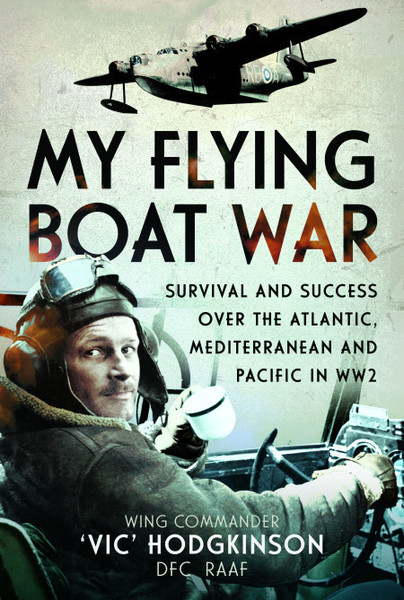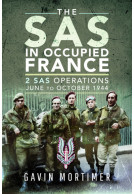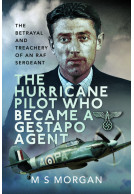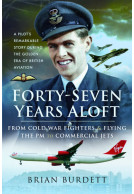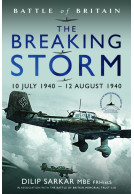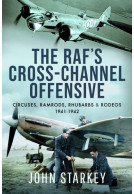My Flying Boat War (eBook)
Survival and Success over the Atlantic, Mediterranean and Pacific in WW2
Imprint: Air World
File Size: 59.4 MB (.epub)
Pages: 256
ISBN: 9781399065634
Published: 16th April 2024
| Other formats available - Buy the Hardback and get the eBook for £1.99! | Price |
|---|---|
| My Flying Boat War Hardback Add to Basket | £29.99 |
Wing Commander Vic Hodgkinson DFC served throughout the Second World War as a pilot in the Royal Australian Air Force. His war began in 1939 when he travelled to the UK to become one of the founding members of 10 Squadron RAAF. With its training complete, the squadron took delivery of its first Short Sunderland flying boats.
In early 1940, the squadron was loaned to the RAF by the Australian Government. Flying from Mount Batten (Plymouth), Pembroke Dock (Wales) and Oban (Scotland), Vic Hodgkinson, along with the rest of the squadron, played a vital part in the early stages of the Battle of the Atlantic as part of the RAF’s Coastal Command.
During that time, he was involved in numerous air-sea rescues. This included picking up twenty-one survivors of a U-boat attack, and of returning the compliment with depth charge attacks on German submarines.
Vic himself became a survivor when, returning from a fifteen-hour patrol in fog, his Sunderland crashed into the Irish Sea near Bardsey Island, off the North Wales coast, while returning to Pembroke Dock. Six of his eleven crew were killed; it was a gruelling twelve hours before the survivors were finally rescued.
In May 1941, Vic and his crew were despatched to the Mediterranean, but became stranded in Egypt after their Sunderland was damaged. Whilst awaiting spare parts, Vic volunteered to serve with a RAF flying boat squadron based in Alexandria. He found himself flying through heavy enemy fire to make contact with Allied troops fighting for their lives in Crete.
After this, they were once again back in the Atlantic, flying patrols across the Bay of Biscay. During one such sortie, Vic’s crew became embroiled in a battle of the giants with a Focke-Wulf Fw 200 Condor. It was an engagement that ended badly for the faster and heavily armed enemy aircraft.
In 1942, Hodgkinson was sent back to Australia, going on to serve with both 20 Squadron RAAF and 40 Squadron RAAF. It was in this period that he also flew the Consolidated Catalina, Martin Mariner and other flying boats – including Dornier Do 24s that had been impressed into RAAF service after the fall of the Dutch East Indies. His missions included dropping supplies to remote areas, minelaying, reporting on Japanese ship movements, and engaging in the bombing of enemy positions.
This is Vic’s remarkable story, told here in his own words for the first time.
“Hodgkinson’s exploits including rescuing mariners whose ship was sunk by a U-boat; attacking U-boats, surviving a crash of his aircraft and the resulting 12 hours in the Atlantic; dodging flak during the battle for Crete; and dogfighting a German patrol bomber over the Bay of Biscay.”
Seapower Magazine
"This book comes very highly recommended."
The Catalina Society - The Catalina News: Issue No 102, Autumn/Winter 2024
As featured
Poole Flying Boats Trustee Newsletter, Autumn 2024
As featured by
Air Force Association NSW
As featured
Lymington Advertiser & Times - 28/06/24
"The RAAF flying boat DFC" article in
RAF News - June 14, 2024
Article: Flying Boats on Southampton Water
The Herald (Your Community Magazine Southampton)
As featured in
The Bookseller, Jan 23
About Wg Cdr Vic Hodgkinson DFC
Wing Commander VIC HODGKINSON DFC served throughout the Second World War as a pilot in the Royal Australian Air Force. He lived his life fascinated by aviation, an interest that started when, living in Australia, he watched the biplanes that used a nearby crossroads as a guide to the local aerodrome. Determined to fly, Vic, the son of a signwriter, joined the RAAF as a storekeeper in 1937. He then trained to be a pilot, gaining his coveted ‘Wings’ before the outbreak of war. In the post-war years, Vic enjoyed a lengthy and enjoyable career as a pilot for BOAC. It was in the 1970s that he wrote about his RAAF training and wartime flying experiences. He passed away in 2010.







